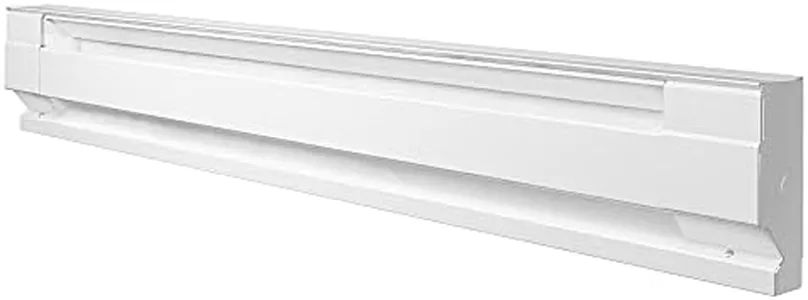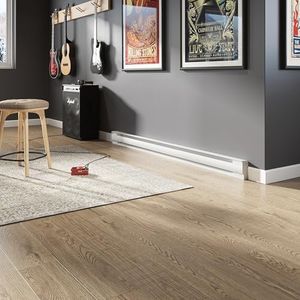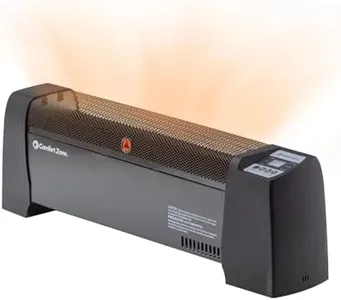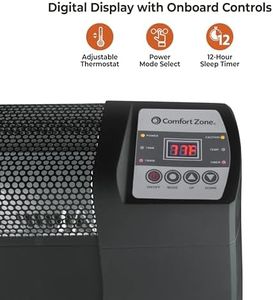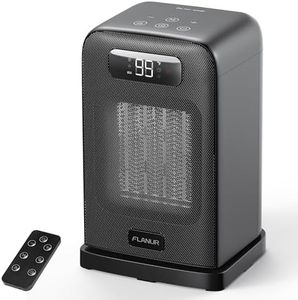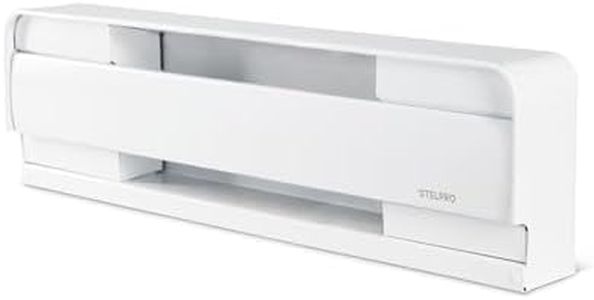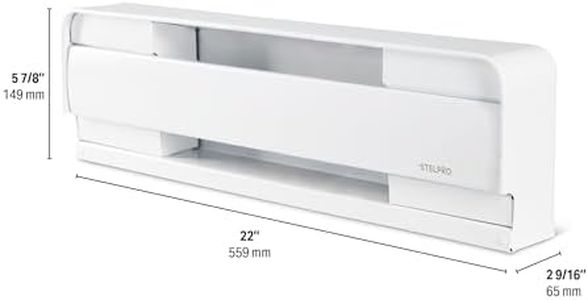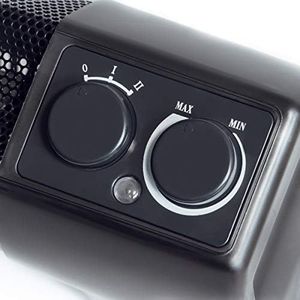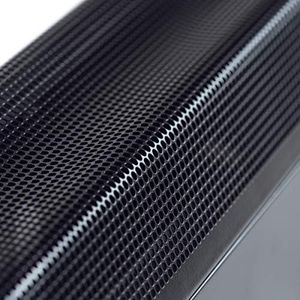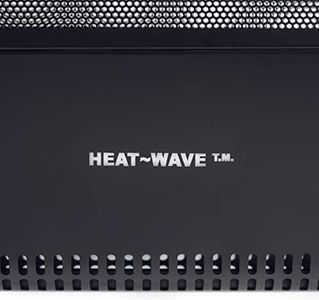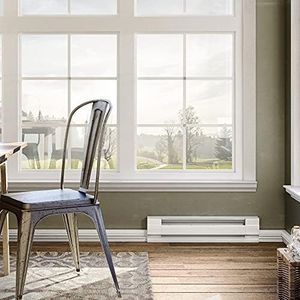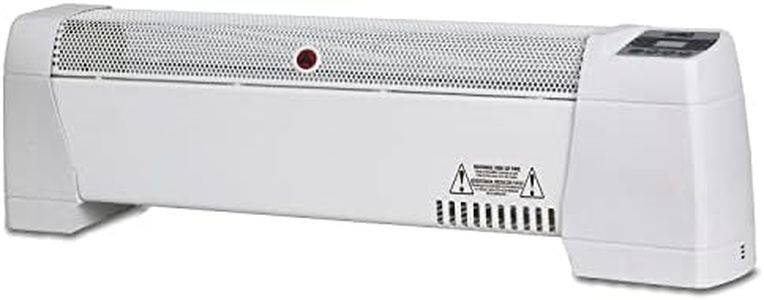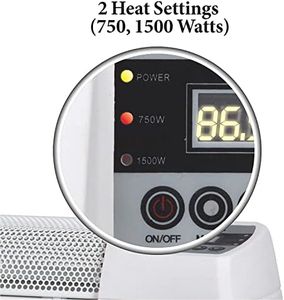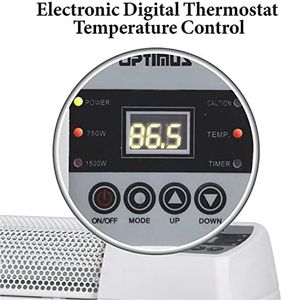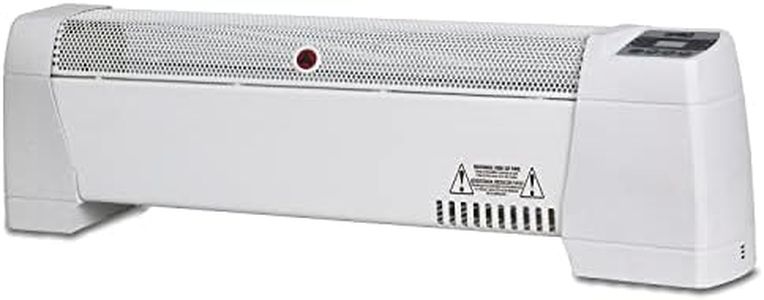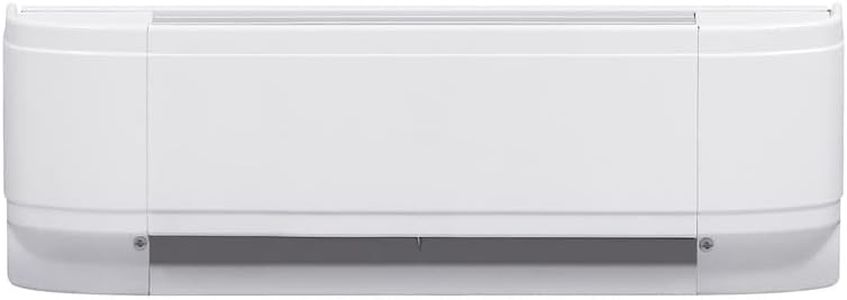We Use CookiesWe use cookies to enhance the security, performance,
functionality and for analytical and promotional activities. By continuing to browse this site you
are agreeing to our privacy policy
10 Best Baseboard Heaters
From leading brands and best sellers available on the web.Top 10 Best Baseboard Heaters 2025 in Canada
#1
Winner
Cadet F Series 36" Electric Baseboard Heater (Model: 3F750-1W Part: 05532), 2560 BTU, 120 Volt, 750 Watt, White
Cadet F Series 36" Electric Baseboard Heater (Model: 3F750-1W Part: 05532), 2560 BTU, 120 Volt, 750 Watt, White
Wattage (Power Output): 750 watts
Type (Electric vs. Hydronic): Electric
Length of Heater: 36 inches
Thermostat Control: Needs separate thermostat
Safety Features: UL listed, powder-coated box
Installation Requirements: May need professional wiring help
Noise Level: Silent
Chosen by 1365 this week
Cadet Manufacturing 09954 240-Volt White Baseboard Hardwire Electric Zone Heater, 1000-Watt, 48-Inch
Cadet Manufacturing 09954 240-Volt White Baseboard Hardwire Electric Zone Heater, 1000-Watt, 48-Inch
Wattage (Power Output): 1000-watt
Type (Electric vs. Hydronic): Electric
Length of Heater: 48 inches
Thermostat Control: No built-in thermostat; buy separate
Safety Features: High-temp safety shutoff
Installation Requirements: Hardwired, universal wiring, pro installer
Noise Level: Quiet, no fan noise
Cadet F Series 48" Electric Baseboard Heater (Model: 4F1000-1W, Part: 05534), 3412 BTU, 120 Volt, 1000 Watt, White
Cadet F Series 48" Electric Baseboard Heater (Model: 4F1000-1W, Part: 05534), 3412 BTU, 120 Volt, 1000 Watt, White
Wattage (Power Output): 1000 watts
Type (Electric vs. Hydronic): Electric
Length of Heater: 48 inches
Thermostat Control: No thermostat included
Safety Features: Steel casing, auto shut-off, UL listed
Installation Requirements: Pre-punched holes, wiring both ends
Noise Level: Quiet
Stelpro B1002W Baseboard Heater 1000W, 47 1/2" x 5 7/8", 240 Volts (120 Volts), B-Series BRAVA Electric Baseboard with Rounded Corners, White
Stelpro B1002W Baseboard Heater 1000W, 47 1/2" x 5 7/8", 240 Volts (120 Volts), B-Series BRAVA Electric Baseboard with Rounded Corners, White
Wattage (Power Output): 1000 watts
Type (Electric vs. Hydronic): Electric
Length of Heater: 47.5 inches
Thermostat Control: No thermostat; optional separate purchase
Safety Features: Thermal protection and automatic reset
Installation Requirements: Wall mount; 240V; may need electrician
Noise Level: Noiseless
Comfort Zone CZ650B 750/1,500-Watt Electric Baseboard Space Heater with Digital Thermostat, Dent-Proof End Panels, Overheat Protection System, Safety Tip-Over Switch, & Stay-Cool Body, Black
Comfort Zone CZ650B 750/1,500-Watt Electric Baseboard Space Heater with Digital Thermostat, Dent-Proof End Panels, Overheat Protection System, Safety Tip-Over Switch, & Stay-Cool Body, Black
Wattage (Power Output): 750/1500 watt
Type (Electric vs. Hydronic): Electric
Length of Heater: 91 cm
Thermostat Control: digital thermostat and timer
Safety Features: tip-over switch, overheat protection
Installation Requirements: plug-in, no complex setup
Noise Level: silent
Stelpro B03029W Baseboard Heater 300W, 22" x 5 3/4", 240 volts, BRAVA Series - Electric Baseboard with Rounded Corners, White
Stelpro B03029W Baseboard Heater 300W, 22" x 5 3/4", 240 volts, BRAVA Series - Electric Baseboard with Rounded Corners, White
Wattage (Power Output): 300 watts
Type (Electric vs. Hydronic): Electric
Length of Heater: 22 inches
Thermostat Control: Built-in or wall thermostat sold separately
Safety Features: Thermal protection, auto reset, child lock
Installation Requirements: Floor mount, indoor, thermostat separate
Noise Level: Noiseless
Heat Wave 1,000 Watt Convector Baseboard Heater, Black
Heat Wave 1,000 Watt Convector Baseboard Heater, Black
Wattage (Power Output): 500W low, 1000W high
Type (Electric vs. Hydronic): Electric
Length of Heater: 25 inches
Thermostat Control: Adjustable thermostat
Safety Features: Thermal cut-off, tip-over switch
Installation Requirements: Floor mount, corded, indoor use
Noise Level: Very low
Optimus H-3603 30-Inch Baseboard Convection Heater with Digital Display and Thermostat, White
Optimus H-3603 30-Inch Baseboard Convection Heater with Digital Display and Thermostat, White
Wattage (Power Output): 750 and 1500 watts
Type (Electric vs. Hydronic): Electric
Length of Heater: 30 inches
Thermostat Control: Auto control, 35°F to 95°F
Safety Features: Tip-over switch, overheating limit
Installation Requirements: Plug-and-play, floor stand
Noise Level: Quiet
#10
Buying Guide for the Best Baseboard Heaters
Choosing the right baseboard heater is all about matching your room’s needs with the heater’s capabilities. Baseboard heaters are a popular choice for supplemental or whole-room heating because they’re quiet, easy to install, and provide steady warmth. To find the best fit, you’ll want to consider the size of your space, how much control you want over the temperature, and any safety or installation requirements you might have. Understanding the key specifications will help you make a confident and informed decision.Wattage (Power Output)Wattage tells you how much heat the baseboard heater can produce. It’s important because it determines how effectively the heater can warm up your space. Lower wattage heaters (around 500-750 watts) are suitable for small rooms or as a supplement to other heating. Medium wattage (1000-1500 watts) works well for average-sized bedrooms or offices, while higher wattage (2000 watts or more) is best for large rooms or open areas. To pick the right wattage, consider the size of your room—generally, you’ll need about 10 watts per square foot. If your room is poorly insulated or has high ceilings, you might want to go a bit higher.
Type (Electric vs. Hydronic)Baseboard heaters come in two main types: electric and hydronic. Electric heaters use a metal heating element and warm up quickly, making them good for spaces where you want fast heat. Hydronic heaters use heated liquid inside the unit, which takes longer to warm up but retains heat longer and provides more even warmth. If you want quick, on-demand heat, electric is a good choice. If you prefer a more consistent, gentle heat and don’t mind waiting a bit for it to warm up, hydronic might be better.
Length of HeaterThe length of the baseboard heater affects both its heat output and how it fits in your room. Longer heaters can spread heat more evenly and are often needed for larger spaces, while shorter heaters are easier to fit in small rooms or tight spaces. When choosing, measure the wall space where you plan to install the heater and make sure the length fits comfortably without blocking furniture or outlets.
Thermostat ControlThermostat control lets you set and maintain your desired room temperature. Some baseboard heaters have built-in thermostats, while others require a separate wall-mounted thermostat. Built-in thermostats are convenient for individual room control, but wall thermostats can be more accurate and easier to adjust. If you want precise temperature control or plan to use multiple heaters in different rooms, consider models that work with wall thermostats.
Safety FeaturesSafety features are important for peace of mind, especially if you have children or pets. Look for heaters with overheat protection, which automatically shuts off the unit if it gets too hot, and tip-over switches, which are more common in portable models. Cool-to-the-touch surfaces and childproof covers are also helpful. If safety is a top concern, prioritize models with multiple built-in protections.
Installation RequirementsInstallation requirements refer to how the heater is set up in your home. Some baseboard heaters are plug-in and can be installed by anyone, while others need to be hardwired into your home’s electrical system, which may require a professional. Consider your comfort level with installation and whether you want a permanent or temporary solution. If you’re not comfortable with electrical work, look for models that are easy to install or plan to hire a professional.
Noise LevelNoise level is how much sound the heater makes while operating. Most baseboard heaters are very quiet, but some may make clicking or popping sounds as they heat up and cool down. If you’re sensitive to noise or plan to use the heater in a bedroom or study, look for models that are specifically described as silent or ultra-quiet.






